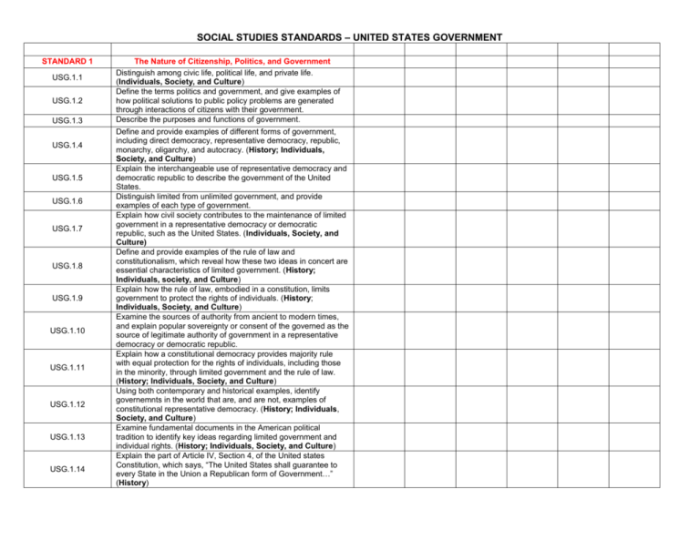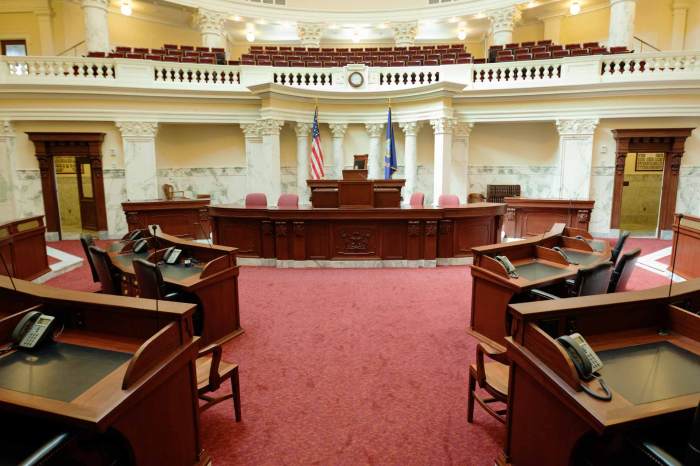AGS United States Government Answers provides a comprehensive overview of the structure, functions, policies, and impact of the U.S. government. This guide explores the key agencies, branches, and programs that shape the American political landscape, empowering individuals with a deeper understanding of their government and its role in their lives.
From the intricacies of government structure to the complexities of international affairs, AGS United States Government Answers offers a thorough examination of the U.S. government’s multifaceted nature. It delves into the powers and responsibilities of each branch, the system of checks and balances, and the major policies and programs that impact citizens’ daily lives.
United States Government Agencies

The United States government is a complex system of checks and balances, with power divided among three branches: the legislative, executive, and judicial. Each branch has its own agencies and departments, which carry out the laws and policies of the government.The
legislative branch is responsible for making laws. The two houses of Congress, the Senate and the House of Representatives, pass bills that are then signed into law by the President. The legislative branch also has oversight authority over the executive branch, and can impeach and remove the President and other high-ranking officials.The
executive branch is responsible for carrying out the laws passed by Congress. The President is the head of the executive branch, and appoints the heads of the various departments and agencies. The executive branch also includes the Vice President, the Cabinet, and the federal bureaucracy.The
judicial branch is responsible for interpreting the laws passed by Congress and for resolving disputes. The Supreme Court is the highest court in the United States, and its decisions are binding on all lower courts. The judicial branch also includes the federal courts of appeals and the federal district courts.
Independent Agencies
In addition to the three branches of government, there are also a number of independent agencies that are not part of any branch. These agencies are typically responsible for regulating specific industries or activities. Some of the most well-known independent agencies include the Federal Reserve, the Securities and Exchange Commission, and the Environmental Protection Agency.
Government Structure and Functions
The United States government is a federal republic with three separate but coequal branches: the executive, legislative, and judicial branches. Each branch has its own powers and responsibilities, and the system of checks and balances ensures that no one branch becomes too powerful.
Executive Branch
The executive branch is headed by the president, who is both the head of state and the commander-in-chief of the armed forces. The president is responsible for enforcing the laws of the United States and appointing the heads of the various executive departments, such as the Department of State, the Department of Defense, and the Department of Justice.
Legislative Branch
The legislative branch is composed of the Senate and the House of Representatives. The Senate is responsible for confirming presidential appointments and ratifying treaties. The House of Representatives has the sole power to impeach the president and other federal officials.
Judicial Branch
The judicial branch is composed of the Supreme Court and the lower federal courts. The Supreme Court is the highest court in the United States and has the power to interpret the Constitution and to overturn laws that it finds to be unconstitutional.
System of Checks and Balances, Ags united states government answers
The system of checks and balances is a system of checks and balances among the three branches of government. This system ensures that no one branch becomes too powerful. For example, the president can veto laws passed by Congress, but Congress can override the president’s veto with a two-thirds vote.
The Supreme Court can declare laws passed by Congress to be unconstitutional, but Congress can amend the Constitution to overturn the Supreme Court’s decision.
Government Policies and Programs

The United States government implements numerous policies and programs to address various societal issues and promote national well-being. These initiatives are designed to achieve specific goals and objectives, ranging from economic growth to social welfare.
Economic Policies
The government’s economic policies aim to stabilize the economy, promote economic growth, and reduce unemployment. Key policies include:
- Monetary policy, implemented by the Federal Reserve, manages the supply of money and interest rates to influence economic activity.
- Fiscal policy, managed by the government, involves adjusting government spending and taxation to influence economic growth and stability.
Social Welfare Programs
Social welfare programs provide assistance to individuals and families in need. Major programs include:
- Social Security, a federal program that provides retirement, disability, and survivor benefits.
- Medicare, a federal program that provides health insurance to seniors and individuals with disabilities.
- Medicaid, a federal and state program that provides health insurance to low-income individuals and families.
Environmental Policies
Environmental policies aim to protect and conserve natural resources, reduce pollution, and mitigate climate change. Key policies include:
- Clean Air Act, which regulates air pollution from industrial and mobile sources.
- Clean Water Act, which regulates water pollution from industrial and municipal sources.
- Endangered Species Act, which protects threatened and endangered species and their habitats.
These policies and programs have significant impacts on citizens’ lives. Economic policies influence job opportunities, income levels, and the cost of living. Social welfare programs provide financial security, healthcare access, and support for vulnerable populations. Environmental policies protect the health and well-being of citizens and ensure a sustainable future.
Government Finances: Ags United States Government Answers
The United States government raises revenue primarily through taxation, borrowing, and seigniorage (the creation of money). The federal budget process involves the President submitting a budget proposal to Congress, which then debates and approves a budget resolution. The national debt is the total amount of money that the government owes to individuals, businesses, and other countries.
It has significant implications for the economy, including interest payments, inflation, and economic growth.
Federal Budget Process
The federal budget process begins with the President submitting a budget proposal to Congress. This proposal Artikels the government’s spending and revenue plans for the upcoming fiscal year. Congress then debates and approves a budget resolution, which sets overall spending and revenue targets.
After the budget resolution is passed, Congress begins the appropriations process, which involves passing individual spending bills for each government agency.
National Debt
The national debt is the total amount of money that the government owes to individuals, businesses, and other countries. It has grown significantly in recent years, primarily due to increased government spending and tax cuts. The national debt has a number of implications for the economy, including:
- Interest payments:The government must pay interest on the national debt, which can be a significant expense.
- Inflation:If the government borrows too much money, it can lead to inflation, which is a decrease in the value of money.
- Economic growth:The national debt can crowd out private investment, which can lead to slower economic growth.
Government and the Citizen
The relationship between government and the citizen is a complex and ever-evolving one. In the United States, citizens have a wide range of rights and responsibilities, and they play an important role in the political process.
One of the most important rights of U.S. citizens is the right to vote. Voting is a way for citizens to have a say in who represents them in government and what policies are enacted. Citizens also have the right to free speech, which allows them to express their opinions about government without fear of reprisal.
In addition, citizens have the right to assemble and petition the government, which allows them to voice their concerns and advocate for change.
Along with these rights, citizens also have a number of responsibilities. One of the most important responsibilities of citizens is to obey the law. Citizens also have a responsibility to pay taxes, which help to fund government programs and services.
In addition, citizens have a responsibility to serve on juries and to participate in the political process.
The Process of Voting and Political Participation
The process of voting in the United States is relatively straightforward. Citizens who are 18 years of age or older and have registered to vote can cast a ballot in local, state, and federal elections. There are a variety of ways to register to vote, including online, by mail, or in person at a voter registration office.
On Election Day, citizens can vote at their designated polling place. Voters will need to bring a valid form of identification, such as a driver’s license or passport. Once they have voted, their ballots will be counted and the results will be announced.
In addition to voting, there are a number of other ways for citizens to participate in the political process. Citizens can attend political rallies, volunteer for candidates, or donate money to campaigns. Citizens can also contact their elected officials to express their opinions about issues that are important to them.
The Role of the Media in Shaping Public Opinion about Government
The media plays a vital role in shaping public opinion about government. The media can inform citizens about government policies and programs, and it can also hold government officials accountable for their actions.
There are a variety of different types of media, including newspapers, television, radio, and the internet. Each type of media has its own strengths and weaknesses, and it is important for citizens to be aware of the different perspectives that they offer.
Citizens should also be aware of the potential for bias in the media. Media outlets may have their own political agendas, and they may report on stories in a way that is designed to influence public opinion.
Government in the Global Context

The United States government plays a pivotal role in international affairs, shaping global dynamics and engaging with a diverse array of countries and organizations. This engagement encompasses diplomatic relations, economic cooperation, security alliances, and humanitarian assistance, among other areas.
The U.S. interacts with other countries through bilateral and multilateral channels. Bilateral relations involve direct interactions between the U.S. and individual nations, while multilateral engagements occur through international organizations such as the United Nations, NATO, and the World Trade Organization.
These platforms facilitate cooperation, negotiation, and conflict resolution on a global scale.
Challenges and Opportunities
The U.S. faces both challenges and opportunities in the globalized world. Challenges include geopolitical tensions, economic competition, terrorism, and climate change. Opportunities arise from global trade, technological advancements, and the potential for collaboration on shared challenges.
- Geopolitical Tensions:The U.S. navigates complex relationships with other major powers, such as China and Russia, to maintain stability and prevent conflict.
- Economic Competition:The U.S. engages in global economic forums to promote fair trade, protect intellectual property, and foster economic growth.
- Terrorism:The U.S. collaborates with allies to combat terrorism, share intelligence, and disrupt terrorist networks.
- Climate Change:The U.S. participates in international agreements and initiatives to address climate change, reduce emissions, and promote sustainable practices.
- Global Trade:The U.S. participates in multilateral trade agreements to expand market access, promote economic growth, and reduce trade barriers.
- Technological Advancements:The U.S. collaborates with other countries to advance scientific research, share technological innovations, and address global challenges.
- Collaboration on Shared Challenges:The U.S. engages with other countries to address global issues such as poverty, disease, and humanitarian crises.
FAQ Section
What are the three branches of the U.S. government?
The three branches of the U.S. government are the executive branch, the legislative branch, and the judicial branch.
What is the purpose of the system of checks and balances?
The system of checks and balances ensures that no one branch of government becomes too powerful by giving each branch the ability to limit the power of the other branches.
What are some of the major policies and programs implemented by the U.S. government?
Some of the major policies and programs implemented by the U.S. government include Social Security, Medicare, Medicaid, and the Affordable Care Act.